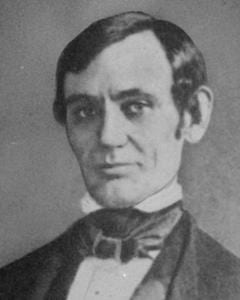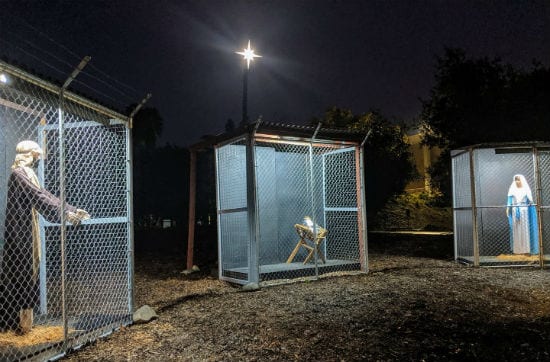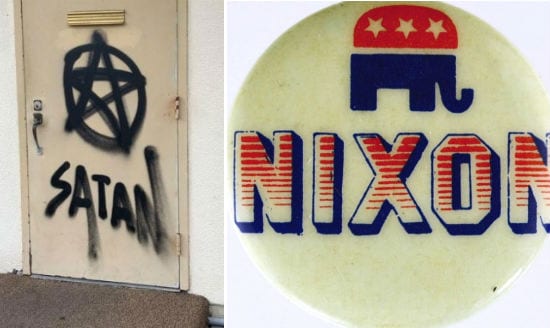I'm just about caught up with The New Yorker, finally reading many of the articles I told myself I would get around to later.
One such article was Malcolm Gladwell's "Big Bad" in the Jan. 12 issue of the magazine. It appeared to be another critique of the SUV boom. I already dislike SUVs, for dozens of reasons, so an article that promised to give me even more reasons wasn't a top priority.
As it turns out, Gladwell's topic is SUVs and safety — but what he says about safety (read also "security") applies well beyond his immediate topic. The article is not online (although they do have an online-only interview with Gladwell about the piece), so I've keyboarded in some excerpts:
The truth, underneath all the rationalizations, seemed to be that SUV buyers thought of big, heavy vehicles as safe: they found comfort in being surrounded by so much rubber and steel. To the engineers, of course, that didn't make any sense, either: if consumers really wanted something that was big and heavy and comforting, they ought to buy minivans, since minivans, with their unit-body construction, do much better in accidents than SUVs. (In a 35-mph crash test, for instance, the driver of a Cadillac Escalade … has a 16 percent chance of a life-threatening head injury, a 20 percent chance of a life-threatening chest injury and a 35 percent chance of a leg injury. The same numbers in a Ford Windstar minivan — a vehicle engineered from the ground up, as opposed to simply being bolted onto a pickup truck frame — are, respectively, 2 percent, 4 percent and 1 percent.) But this desire for safety wasn't a rational calculation. It was a feeling. …
Major automakers in America have relied on the services of a French-born cultural anthropologist, G. Clotaire Rapaille, whose speciality is getting beyond the rational — what he calls "cortex" — impressions of consumers and tapping into their deeper, "reptilian" responses. …
During the design of Chrysler's PT Cruiser, one of the things Rapaille learned was that car buyers felt unsafe when they thought that an outsider could easily see inside their vehicles. So Chrysler made the back window of the PT Cruiser smaller. Of course, making windows smaller — and thereby reducing visibility — makes driving more dangerous, not less so. But that's the puzzle of what has happened in the automobile world: feeling safe has become more important than actually being safe.
Gladwell then accompanies a Consumer Reports safety expert on test drives of two very different cars — a Chrevrolet TrailBlazer and a Porsche Boxster:
Most of us think that SUVs are much safer than sports cars. … in the TrailBlazer our chances of surviving a collision with a hypothetical tractor-trailer in the other lane are greater than they are in the Porsche. What we forget, though, is that in the TrailBlazer you're also much more likely to hit the tractor-trailer because you can't get out of the way in time. In the parlance of the automobile world, the TrailBlazer is better at "passive safety." The Boxster is better when it comes to "active safety," which is every bit as important. …
The SUV boom represents, then, a shift in how we conceive of safety — from active to passive. It's what happens when a larger number of drivers conclude, consciously or otherwise, that the extra thirty feet that the TrailBlazer takes to come to a stop don't really matter, that the tractor-trailer will hit them anyway, and that they are better off treating accidents as inevitable rather than avoidable …
We live in an age, after all, that is strangely fixated on the idea of helplessness: we're fascinated by hurricanes and terrorist acts and epidemics like SARS — situations in which we feel powerless to affect our own destiny. In fact, the risks posed to life and limb by forces outside our control are dwarfed by the factors we can control. Our fixation with helplessness distorts our perception of risk. "When you feel safe, you can be passive," Rapaille says of the fundamental appeal of the SUV. "Safe means I can sleep. I can give up control."
Somewhere on about the second page of Gladwell's article I stopped thinking about the dangerous gas-guzzlers that dominate our highways and I started thinking about something else:
"… fixation with helplessness …"
"… distort[ed] perception of risk …"
"… feeling safe has become more important than actually being safe …"
"… When you feel safe, you can be passive …"
There you have it — that's why President Bush used the word "danger" some 18 times during a single interview yesterday.












